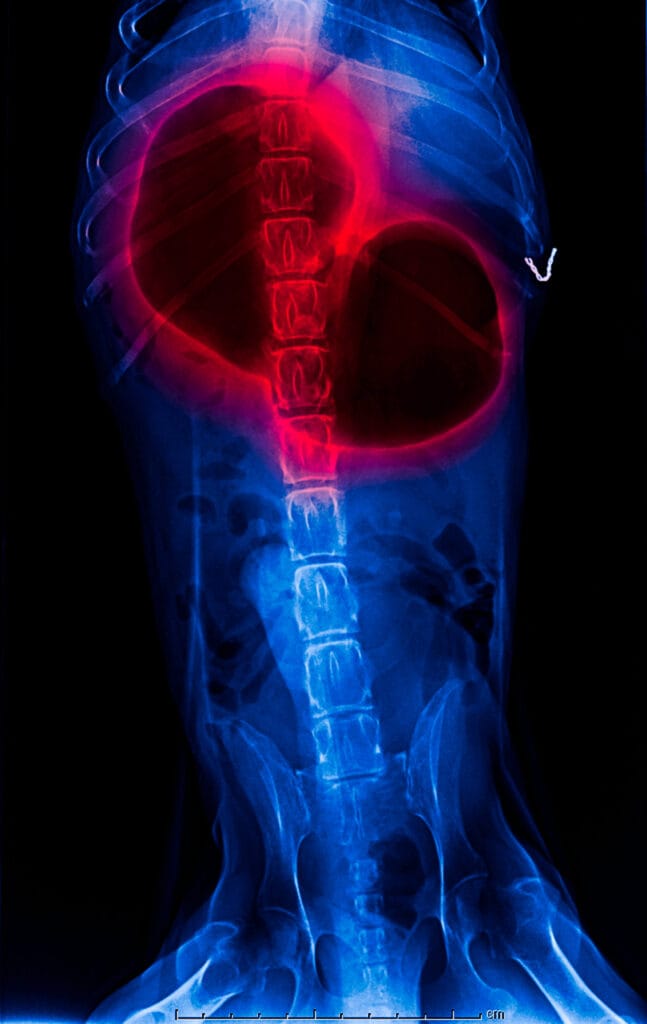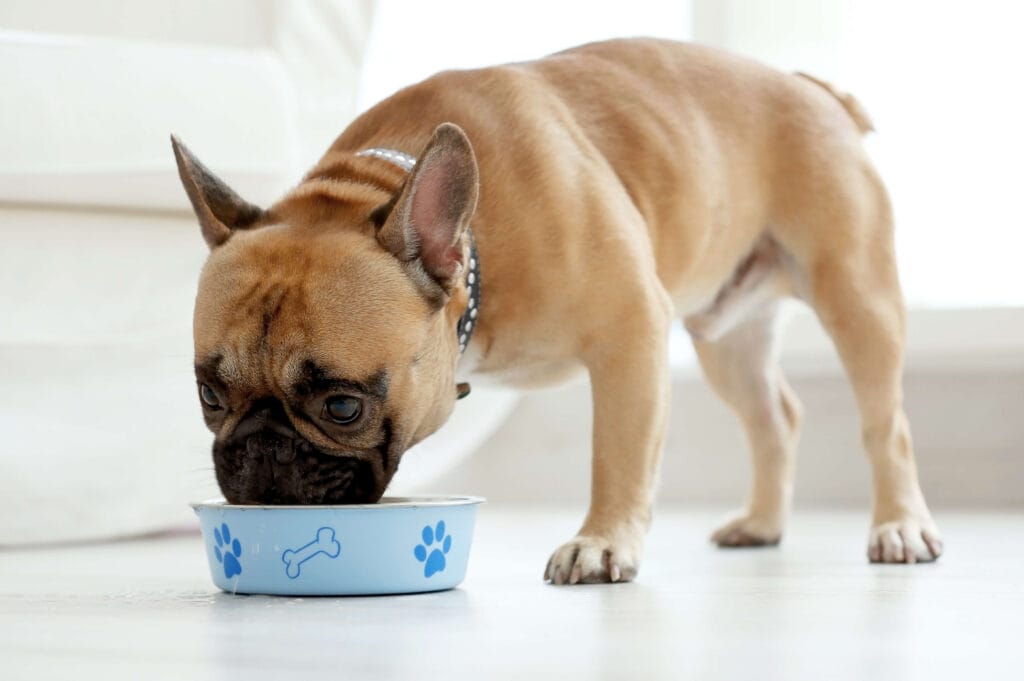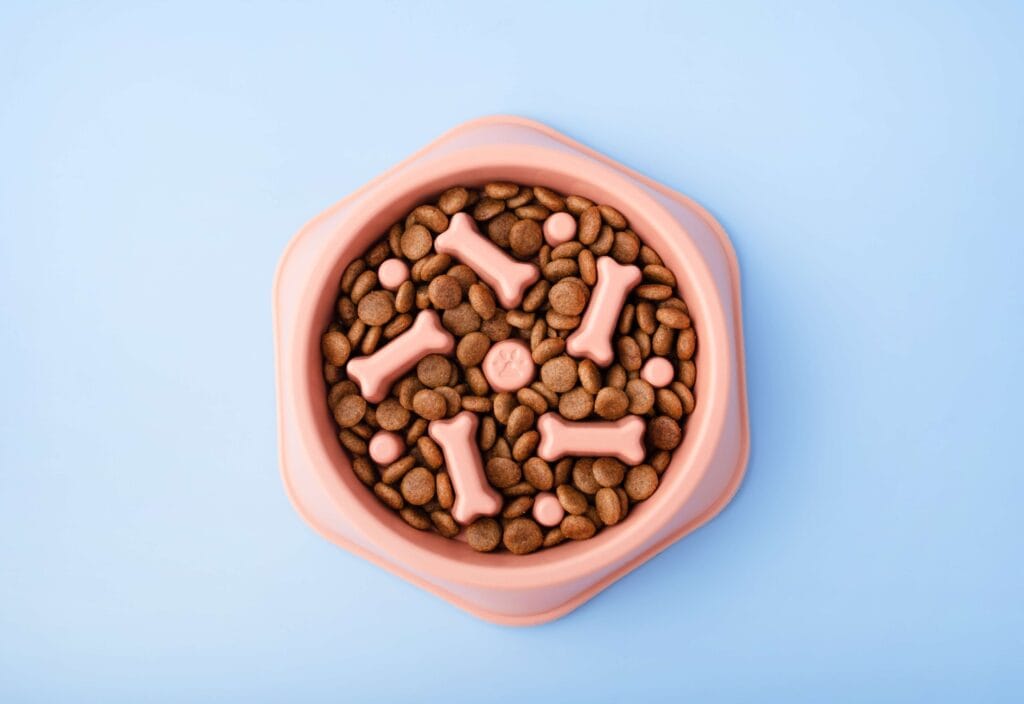Some dogs need slow feeders to (you guessed it!) make them eat slower. Eating slower is generally healthier for our canine companions. Eating too quickly can lead to vomiting, burping, flatulence, bloat or even a life-threatening emergency. Slow feeders force a dog to work around a puzzle or obstacle, which reduces the speed at which they can ingest their food.
There are several reasons to give a dog a slow feeder, but not all dogs need them. For this reason, it’s important to understand the advantages and disadvantages of these bowls before deciding whether they are the right option for your dog.
Why eating slower is healthier
Dogs should eat their food slowly. When they eat too quickly, they take in a lot of air with their food. In milder cases, swallowed air travels through the gut and simply causes flatulence or comes out as burps. However, in some cases, this air can cause health issues, including abdominal sensitivity. Dogs that eat too fast will often be seen to vomit or gag after meals. The gagging and vomiting bring stomach acid into the oesophagus and ultimately back into the throat, and this can cause damage to these structures over time. In more severe cases, bloat occurs, and in rare instances, the stomach can twist, necessitating an emergency trip to the vet to save your dog’s life.
Life-threatening complications
Bloat is uncomfortable as a condition in isolation, but if your dog runs around too soon before or after a meal with too much air in their stomach, they risk their stomach flipping. When this happens, the tubes entering (the oesophagus) and leaving (the small intestine) the stomach are closed, stopping the blood supply and natural movement through the digestive system. The dog’s stomach becomes swollen, he struggles to breathe and in some cases, the stomach bursts. Unfortunately, this condition is fatal in many dogs.

Which dogs need slow feeders
Many dogs eat too fast. They may do this because they are hungry, food driven, anxious, bored, have a high parasite burden (making them hungry all of the time) or are trying to get their food down before another animal steals it from them.
Slow feeders are good because they reduce the rate dogs consume their food. They make it almost impossible for dogs to gulp down food, which lessens the amount of air they take in. This reduces the risk of the dog vomiting, choking or developing bloat.
Dogs who are of the following breeds or display the following traits are more likely to get bloat than other dogs and should be given a slow feeder as a priority:
- Dogs that eat very quickly
- Dogs that eat from a raised food bowl
- Large breed dogs that are over five years old, such as Labradors and Golden Retrievers
- Giant breeds that are older than 3, such as Irish Wolfhounds and Great Danes
- Dogs that like to run around and play immediately after eating
- Deep-chested dogs with chests that reach or fall below their elbows, like Dobermans, Standard Poodles, and Boxers
Other dogs may not need slow feeders, and in some cases the slow feeder can exacerbate frustration or anxiety issues. Dogs with flat faces may also struggle to use slow feeders. If your dog seems to eat at a reasonable pace and does not fit into any of the categories in the list above, you probably don’t need to invest in a slow feeder.
Puppies and slow feeders
Eating fast is just as risky for puppies as for older dogs. Puppies tend to be quick eaters and just love to run around and play straight after a meal. For these reasons, puppies should be given a slow feeder bowl to stop them from gobbling their food too quickly. The puzzle or obstacle in the slow feeder makes it impossible for a puppy to quickly swallow all the food in the bowl, which minimises the amount of air they take in when eating. This reduces the risk of them getting sick after eating or developing bloat.
How slow feeder bowls work
Slow feeder bowls are bowls with a raised piece or pieces or a puzzle inside. Kibble is placed along the puzzles’ pathways or around the raised objects. The dog will need to lick or scoop out the kibble from around these objects. This takes time and accuracy, so the dog automatically eats slower than when he has access to all of the food at once in his regular bowl.
How often should you use a slow feeder
A slow feeder should be used with every meal. It is better to divide a dog’s daily food allowance into at least two smaller meals and then use the slow feeder for each one of these.
Advantages of slow feeders
Slow feeder bowls:
- Slow down dogs that eat fast, which reduces the incidence of burping, flatulence, vomiting, gagging and bloat.
- Fulfil dogs’ natural instinct to ‘work’ for food.
- Give dogs time to feel full, so they are less inclined to eat as much as when they eat quickly.
- Make eating more fun for dogs and provide mental stimulation, helping to curb boredom.
Disadvantages of slow feeders
Slow feeder bowls:
- Are more expensive than normal dog food bowls.
- Can make eating more difficult for dogs with flat faces because the shape of their face makes it difficult to reach the food inside the puzzle (lick mats are a better option for flat-faced dogs).
- Can be difficult for some dogs to understand.
- Need to be matched to the size and eagerness of your dog. Dogs that chew their bowls or are larger may need a stronger bowl than smaller or calmer dogs.
- Can make anxious dogs more anxious.
- Can lead to some dogs becoming very frustrated and even aggressive when they struggle to get access to their food.
- Can result in fussy eaters eating even less as more effort is involved in ingesting the food.

Other options for slowing food intake
If you’d prefer not to use a slow feeder, there are other options for slowing your dog’s eating rate down to a healthy pace. Here we list a few of our best suggestions:
- Break up your dog’s daily food allowance into multiple small meals and give these throughout the day.
- Use kibble from your dog’s daily allowance as treats to break up feeding into very small portions.
- Hide bits of the dog’s daily allowance of kibble around the room or house, and then let your dog go ‘hunting’ for the food.
- Get a qualified animal behaviourist to help train your dog to trust the people and animals around him not to take his food. If your dog realises his food is safe and nobody will take it from him, he may begin to eat more slowly.
- Take your dog to the vet for a check-up and deworm him as instructed to ensure there aren’t other health issues like parasites that are making him excessively hungry.
Take-home message
Slow feeders are great tools for many dogs who eat too quickly or are from breeds particularly predisposed to bloat. With numerous advantages to their use, there really isn’t anything to lose from letting your dog try one!


